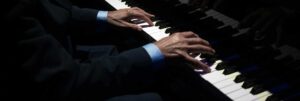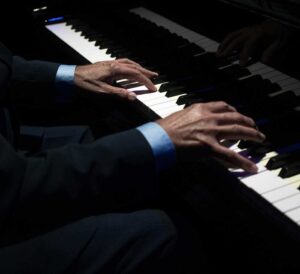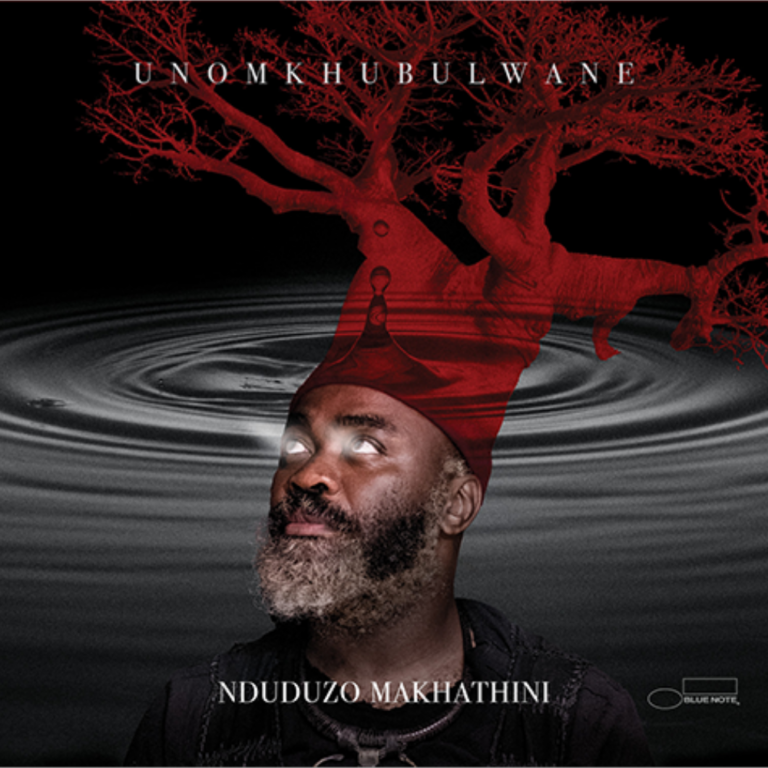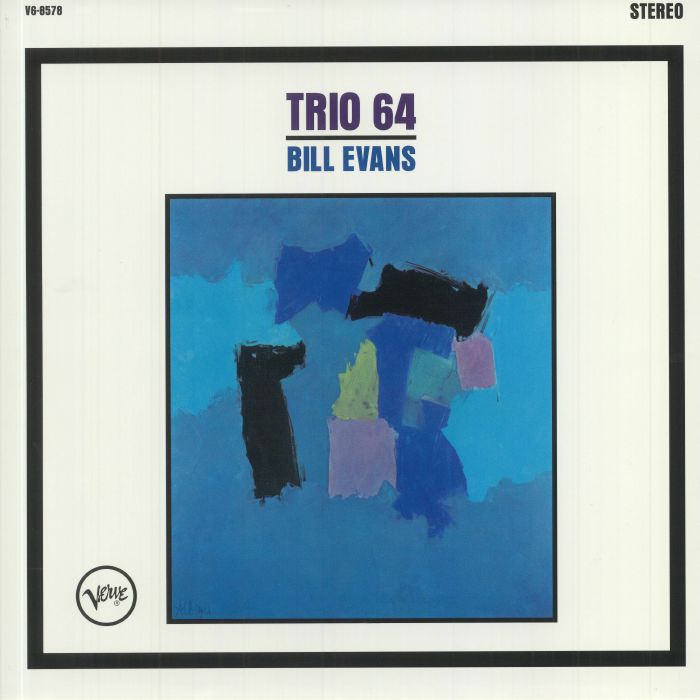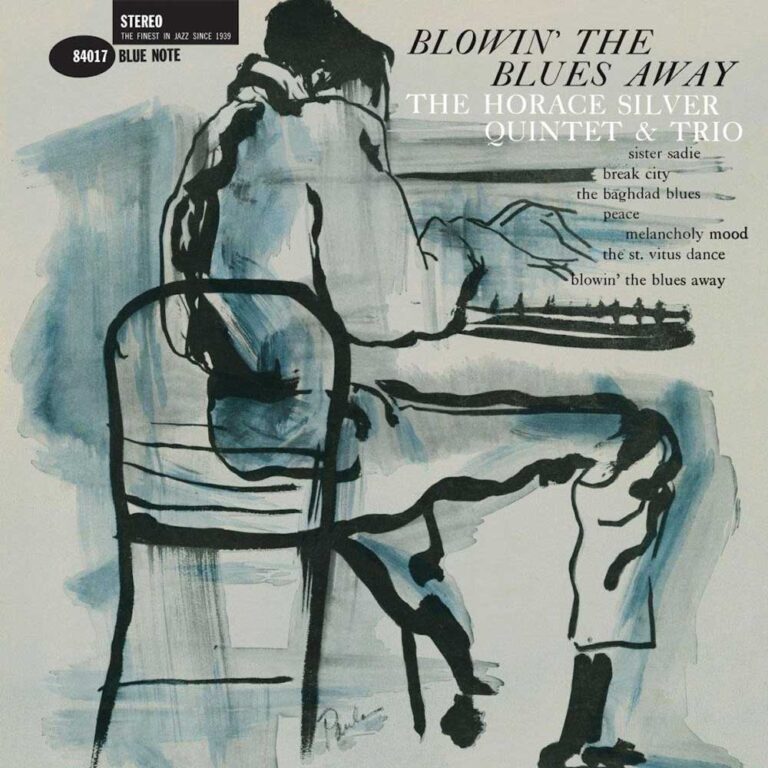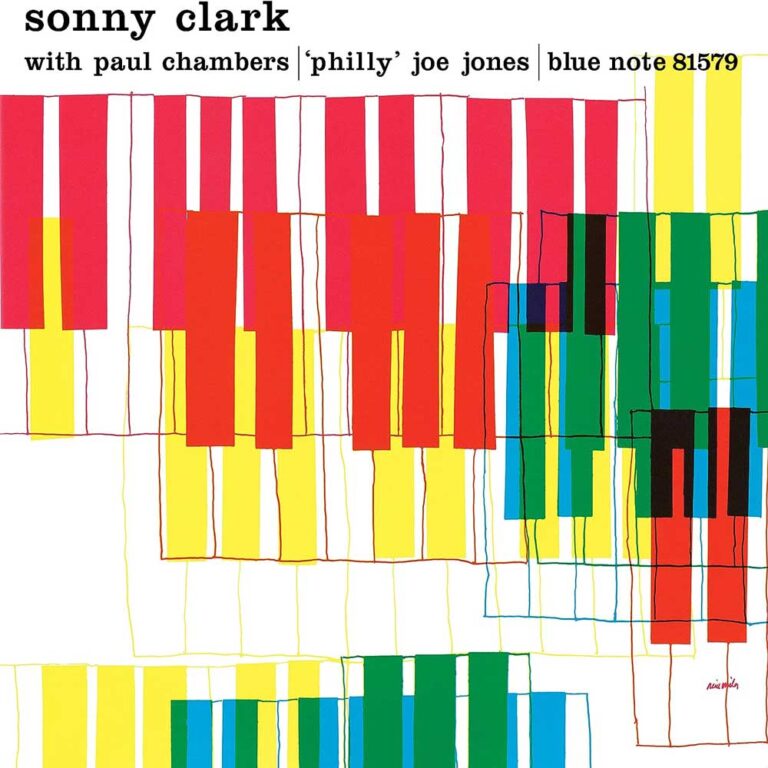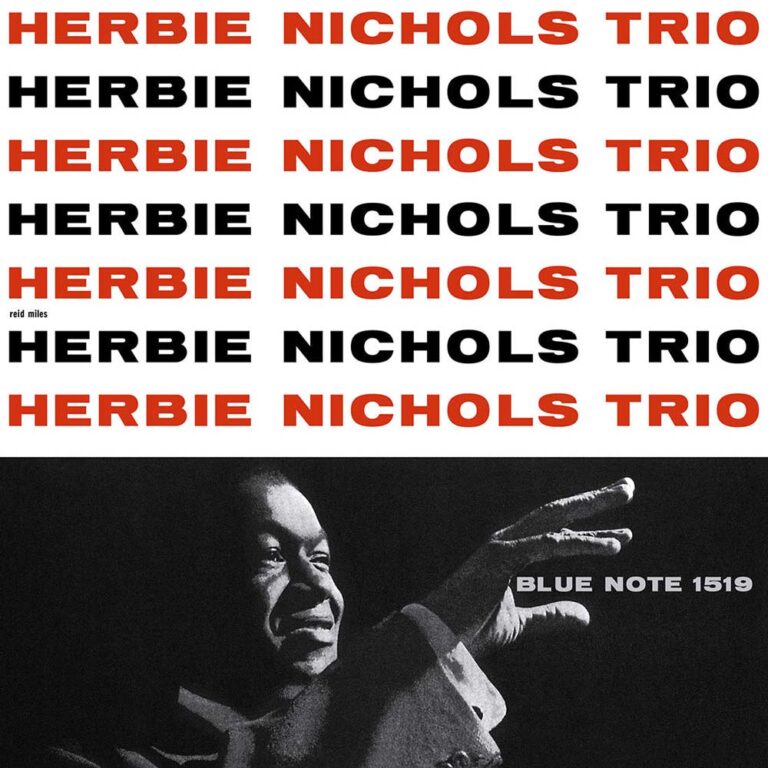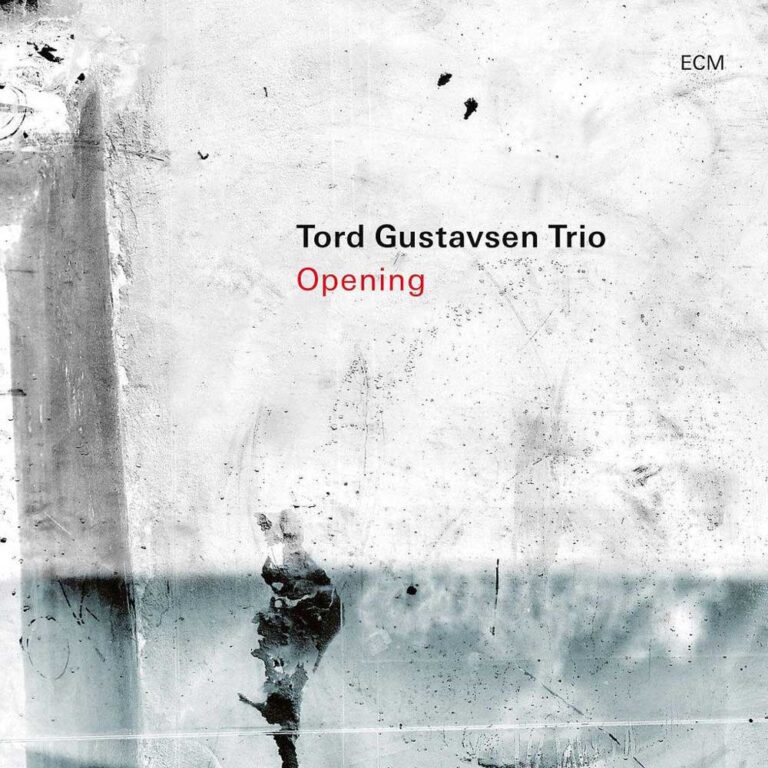“It’s like a very democratic way of thinking about sonic spaces and figuring out a way of making decisions more quickly. It’s less easy to do that in say a quartet,” Ndudozo Makhathini told Everything Jazz recently of his new trio album “uNomkhubulwane”.
The piano trio has a long history in jazz going right back to the 1920s when Bix Beiderbecke, saxophonist Frankie Trumbauer, and guitarist Eddie Lang (as Tram, Bix & Eddie) recorded “For No Reason At All In C”. The tradition continued through the swing era with different line ups such as pianist Clarence Profit employing the guitar of Billy Moore and bass of Ben Brown or Benny Goodman’s Trio with the leader on clarinet, Teddy Wilson on piano, and Gene Krupa on drums.
It would be during the bop era that the current jazz piano trio format (piano, bass and drums) came into its own, firstly through Erroll Garner’s 1946 Trio with Red Callender on bass and Lou Singer on drums followed shortly after by the Bud Powell Trio with bassist Curly Russell and drummer Max Roach. Through the ‘50s and into the ‘60s many leading jazz pianists formed trios with bass and drums – from Horace Silver to McCoy Tyner. While often not as recognised as their larger ensembles, it was an important format that gave these musicians different sonic avenues to explore.
Then there were pianists like Bill Evans and Ahmad Jamal who would be forever associated with the trio.
Here we take a dip into some of the great jazz piano trio LPs.
While the original jazz trios were very much led by the pianist, in the early 1960s Bill Evans sought to democratise the format. “I’m hoping the trio will grow in the direction of simultaneous improvisation,” he wrote in the liner notes to his trio’s debut album from 1960 “Portrait In Jazz”. “If the bass player, for example, hears an idea that he wants to answer, why should he just keep playing a background?”
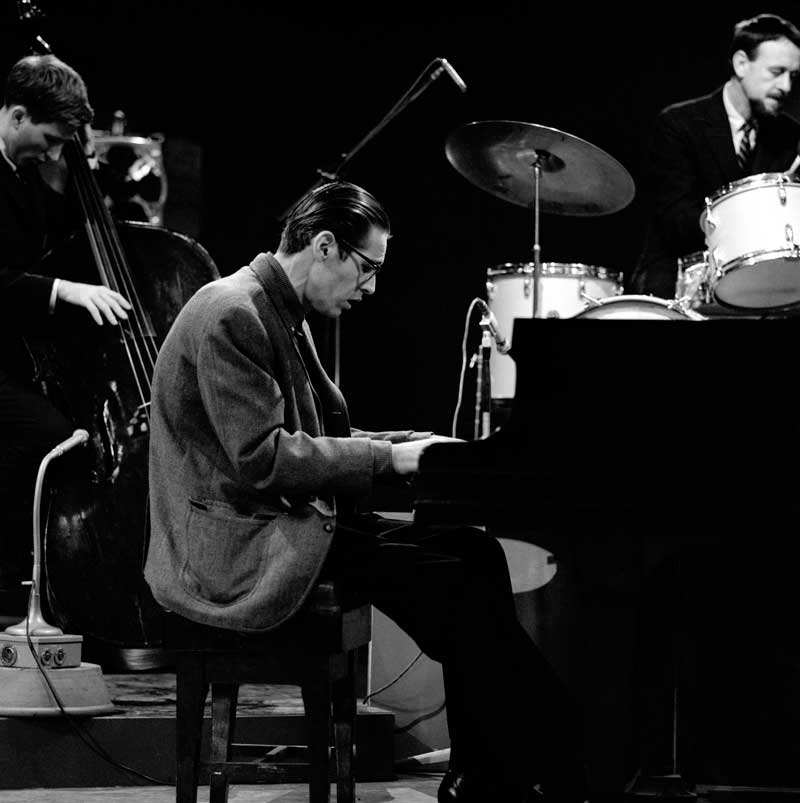
After seven trio albums with Riverside including his famous Village Vanguard recordings, Evans released his first trio album for Verve. It featured drummer Paul Motian and bassist Gary Peacock, just two of the many musicians he worked with in the trio format.
When Horace Silver debuted under his own name for Blue Note in 1952 on his album as part of the “New Faces New Sounds” series (to be titled “Sabu” on its better known 1955 release) it was as a trio with drummer Art Blakey that featured alternating bassists Gene Ramsey and Curley Russell. By the mid ‘50s he had joined Blakey as a founding member of the Jazz Messengers.
After four years he broke off from the group to form what he later said was his favourite Quintet with trumpeter Blue Mitchell, saxophonist Junior Cook, bassist Gene Taylor, and drummer Louis Hayes. On their 1959 album “Blowing the Blues Away” they stripped back to a trio of Silver, Taylor and Hayes for the hard bop standard “The St. Vitus Dance” and the sublime “Melancholy Mood”, predating Evans’ concept of democratising jazz with the trio format. It’s well worth searching out “Horace Silver – The Trio Sides” released by Blue Note in 1976.
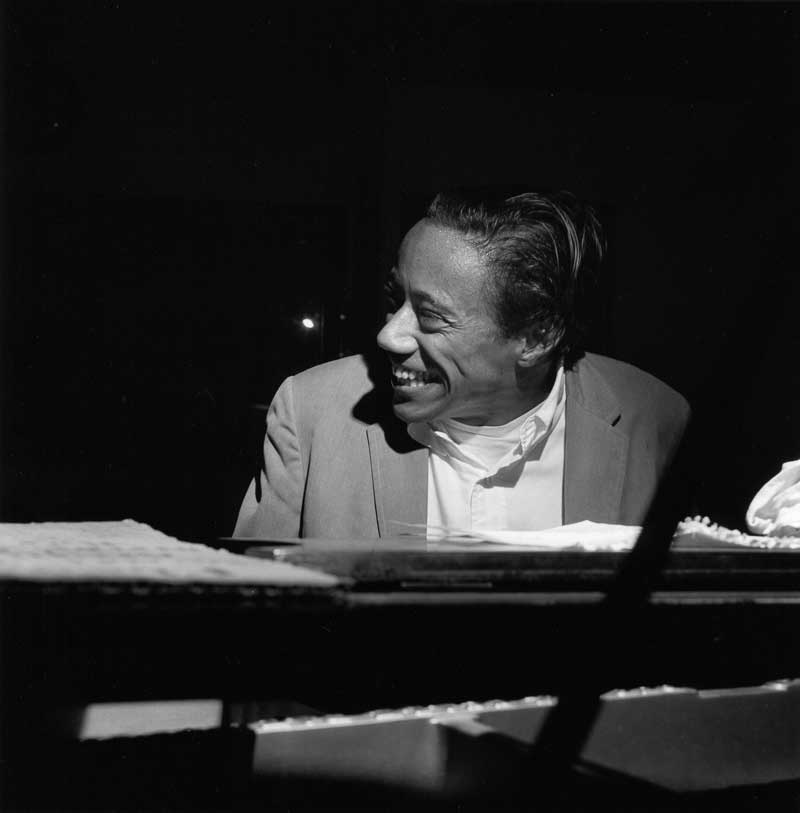
After recording with The Hank Mobley Quintet, on the “Curtain Call” album that sat in the vaults until 1984, Sonny Clark returned to Van Gelder Studio to record three albums in three months as a leader. The final one of these released in 1958 was the highly regarded “Sonny Clark Trio” featuring bassist Paul Chambers and drummer Philly Joe Jones. With a bassist and drummer who powered many a Blue Note rhythm section, Clark demonstrated both his dexterity as a pianist (check his version of Dizzy Gillespie’s “Be-Bop”) and a trio leader who gave his two musicians room to breathe.
Having died from leukaemia in 1963 at the age of just 44, Herbie Nichols never lived to enjoy his reputation as one of the most inventive pianists at Blue Note. “Alfred Lion told me that there were three people in his life that when he heard them, he just flipped and had to record everything they did. The first was Monk, the second was Herbie Nichols, and the third was Andrew Hill,” Michael Cuscuna told Collectors Weekly magazine. After two EPs entitled, rather aptly “The Prophetic Herbie Nichols, Vol. 1 and Vol. 2.” Nichols recorded two trio sessions for his Blue Note album debut with drummer Max Roach and bassists Al McKibbon and Teddy Kotick.
Befitting of their classical and minimal aesthetic, the trio format has been constant throughout the history of ECM – from their first album Mal Waldron’s “Free At Last” in 1970 to Pat Metheny’s debut for the label “Bright Size Life” from 1976, through to recent albums by Vijay Iyer. Norwegian pianist Tord Gustavsen has continued this tradition recording his first trio album for the label “Changing Places” in 2003. For this 2022 album with double bassist Steinar Raknes and drummer Jarle Vespestad he explored themes that have run through his work, blending jazz with Scandinavian folk and classical.
Read on…“Bright Size Life” Pat Metheny’s Slow Burning Masterpiece
Andy Thomas is a London based writer who has contributed regularly to Straight No Chaser, Wax Poetics, We Jazz, Red Bull Music Academy, and Bandcamp Daily. He has also written liner notes for Strut, Soul Jazz and Brownswood Recordings.
Header image: Roberto Adrian.
